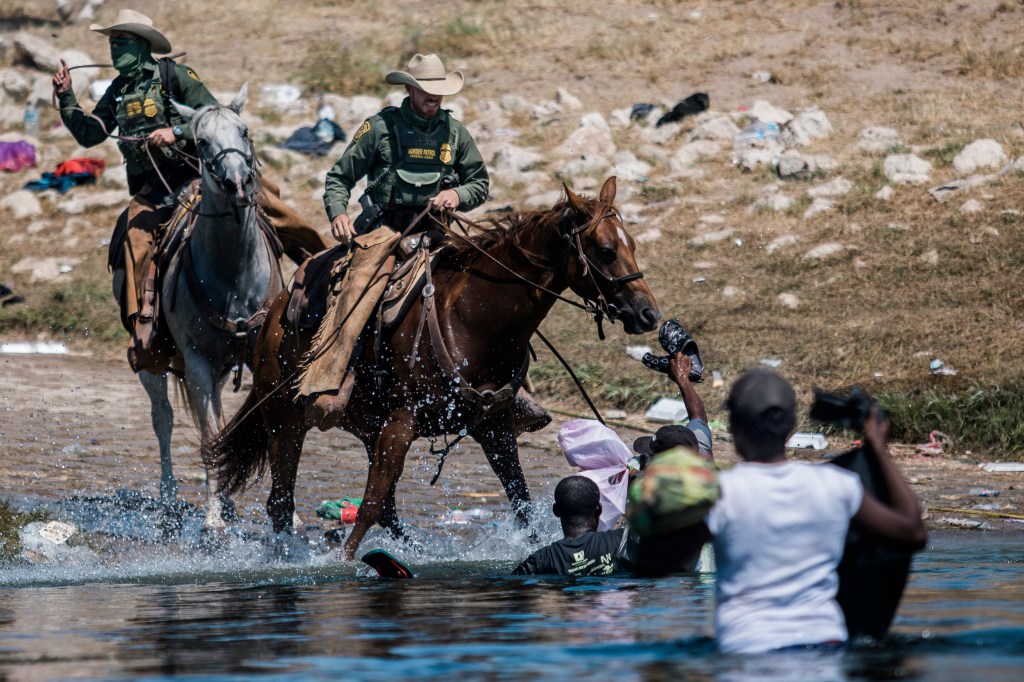Reports of migrant children confined to dirty, crowded Border Patrol stations for weeks spurred Congress to pass a $4.5 billion emergency funding bill Thursday to alleviate the humanitarian crisis.
The Trump administration has blamed a lack of funds to deprive children of everything from basic hygiene like toothbrushes and soap in Border Patrol stations to education and playtime at long-term shelters.
Videos by VICE
But lawyers who regularly tour these facilities say money alone won’t fix the problem. The administration’s own policies are causing children to be held longer in overcrowded detention facilities, causing a backlog that leads to kids being warehoused in facilities that weren’t built to house them, such as the squalid holding cell at the Border Patrol facility in Clint, Texas.
“I will definitely call this a human-made crisis,” said Warren Binford, a law professor at Willamette University who recently visited a Border Patrol in Texas. “It’s a massive mismanagement of the children’s cases.”
On Wednesday, the attorneys asked a federal judge to inspect Clint and additional facilities along the border, claiming there were “flagrant and persistent” violations of the law at these stations. “The government is either unwilling or unable to act,” the National Center for Youth law said in a statement. “Only immediate judicial intervention will end this health and welfare crisis and prevent more child deaths at the border.”
READ: The dark, racist history of Section 1325 of U.S. immigration law
Under normal circumstances — and according to federal rules — it should take no more than 72 hours to get kids out of Border Patrol custody and into shelters under the purview of the Office of Refugee Resettlement. From there, ORR is supposed to reunite children with their sponsors as quickly as possible.
That’s not happening.
In November, the average length of stay in an ORR shelter was 90 days, according to a spokesperson for the Administration for Children and Families, the agency that oversees ORR. By May, it had been cut down to 44 days.
Lawyers say the lengthier stays are the result of policies the Trump administration implemented last summer that significantly slowed down the reunification process. In June, ORR began requiring all adults who lived in a prospective sponsor’s home to submit fingerprints and other information to the agency.
That information was shared with the Department of Homeland Security, which could use it to deport anyone in the country without authorization. Last year, Matthew Albence, then a senior official at ICE, said 41 prospective sponsors had been arrested due to information sharing between ORR and DHS in a two-month period.
“What’s happening is that ORR is not releasing kids expeditiously.”
ORR reversed part of the policy in December — from then on, only sponsors had to submit fingerprints, not every adult in the household. But the fingerprinting rule has continued to be a logistical hurdle for sponsors. According to the National Center for Youth Law, it can take weeks for ORR to process fingerprints, and some sponsors have been told that their fingerprints had “expired,” meaning they had to start the whole process again.
“What’s happening is that ORR is not releasing kids expeditiously,” Hope Frye, an immigration attorney who led the site visit to the Ursula Border Patrol facility in Texas last week, told VICE News.“There are all these kids stuck [in ORR shelters], so there aren’t enough beds. But if you promptly release these kids to sponsors — and all these kids have sponsors — you have plenty of shelter beds.”
READ: Do any of the 2020 Democrats want to abolish ICE? We broke down their immigration plans.
Administration officials stress that licensed ORR shelters are near capacity. It has begun relying on temporary influx shelters, like Homestead, a Florida facility operated by the for-profit company Caliburn International, as a result. Advocates say these facilities are more dysfunctional than licensed shelters.
“At Homestead, they had one caseworker who doesn’t speak a word of Spanish,” Frye said. “The children at Homestead said, ‘Our caseworker changes so much, we don’t even know her name.’”
The slow processing times have led to a lack of bed space in shelters, which is why children are being held in Border Patrol stations for weeks at a time. These facilities aren’t meant for long-term stays. They aren’t equipped with beds or showers. The lights are on 24 hours a day, and temperatures are so low that migrants call them hieleras: iceboxes.
There’s no denying that migrants are coming to the U.S. in near-record numbers. Customs and Border Protection agents have encountered more than 664,000 people during the current fiscal year, an officer said on a Tuesday press call. More than 61,000 of those were unaccompanied children — or, in some cases, children who were separated from their adult relatives.
In other words, 10,000 more migrant children have arrived in the U.S. this year than the entire number of children who were apprehended at the border during the last fiscal year.
The official added that he doesn’t “buy” the attorneys’ allegations that children are being mistreated at Border Patrol stations, and doubled down that the overcrowding at the stations is the result of the ORR’s lack of funds.
But lawyers said that the filthy conditions at Border Patrol stations can’t just be dismissed as the result of bureaucratic mismanagement.
“The conduct at CBP is so substandard, so cruel, and so sadistic that the linkage isn’t there,” Frye said. “CBP stands by itself as a horror show, apart from any responsibility by any other agency.”
Cover: Minors are seen as they exercise in a common area at the Homestead shelter for unaccompanied migrant children on April 08, 2019 in Homestead, Florida. (Photo by Joe Raedle/Getty Images)




